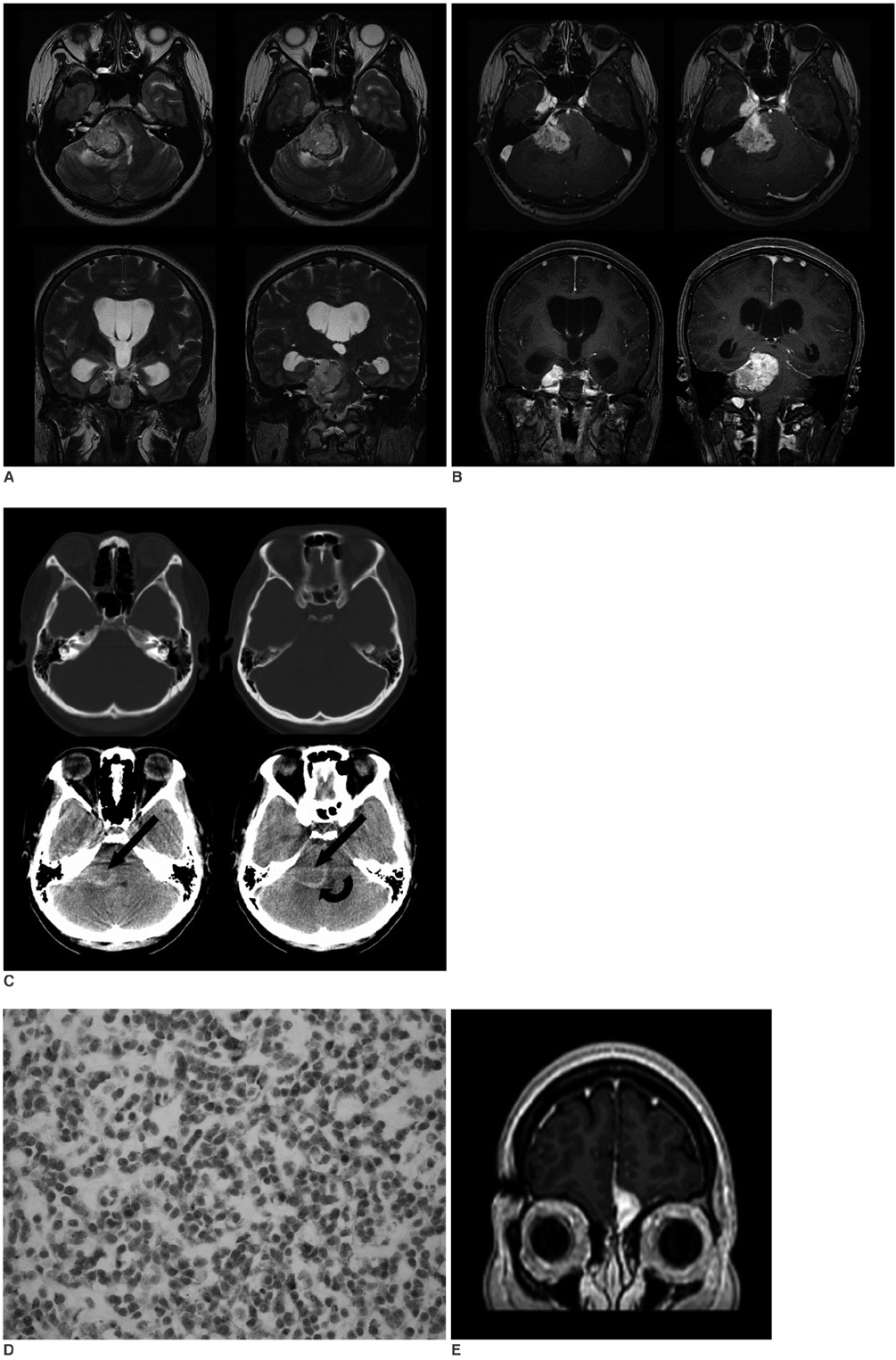Korean J Radiol.
2008 Feb;9(1):76-79. 10.3348/kjr.2008.9.1.76.
Intracranial Dural Metastasis of Ewing's Sarcoma: a Case Report
- Affiliations
-
- 1Department of Radiology, the Research Institute of Radiological Science, Yonsei University College of Medicine, Seoul, Korea. eungykim@yuhs.ac
- 2Department of Neurosurgery, Yonsei University College of Medicine, Seoul, Korea.
- 3Department of Pathology, Yongdong Severance Hospital, Yonsei University College of Medicine, Seoul, Korea.
- KMID: 1734278
- DOI: http://doi.org/10.3348/kjr.2008.9.1.76
Abstract
- Although intracranial dural metastasis of Ewing's sarcoma is a very rare finding, its imaging characteristics are similar to those of its primary form in the central nervous system. Thus, this tumor must be considered in the differential diagnosis of extra-axial dural masses.
Keyword
MeSH Terms
Figure
Reference
-
1. Pizo P, Poplack D. Ewing's sarcoma of bone and soft tissue: principles and practice of pediatric oncology. 1996. 3rd ed. Philadelphia: JB Lippincott;840–841.2. Postovsky S, Ash S, Ramu IN, Yaniv Y, Zaizov R, Futerman B, et al. Central nervous system involvement in children with sarcoma. Oncology. 2003. 65:118–124.3. Shuper A, Cohen IJ, Mor C, Ash S, Kornreich L, Zaizov R. Metastatic brain involvement in Ewing family of tumors in children. Neurology. 1998. 51:1336–1338.4. Li WY, Brock P, Saunders DE. Imaging characteristics of primary cranial Ewing sarcoma. Pediatr Radiol. 2005. 35:612–618.5. Mehta Y, Hendrickson FR. CNS involvement in Ewing's sarcoma. Cancer. 1974. 33:859–862.6. Marciani MG, Stefani N, Peroni L, Stefanini F, Tarantino U, Gigli GL, et al. Intracerebral metastasis in Ewing's sarcoma. Acta Neurol Belg. 1990. 90:149–156.7. Meyer PC, Reah TG. Secondary neoplasms of the central nervous system and meninges. Br J Cancer. 1953. 7:438–448.8. Kleinschmidt-DeMasters BK. Dural metastases. A retrospective surgical and autopsy series. Arch Pathol Lab Med. 2001. 125:880–887.9. Pekala JS, Gururangan S, Provenzale JM, Mukundan S Jr. Central nervous system extraosseous Ewing sarcoma: radiologic manifestations of this newly defined pathologic entity. AJNR Am J Neuroradiol. 2006. 27:580–583.10. Dirks PB, Harris L, Hoffman HJ, Humphreys RP, Drake JM, Rutka JT. Supratentorial primitive neuroectodermal tumors in children. J Neurooncol. 1996. 29:75–84.


